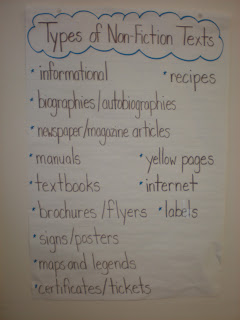When setting up your Independent Reading program, there are many layers to think about and organize in order for it to run smoothly for the rest of the year. How do children choose appropriate books? What do they do if they don't like the book they are reading? What are some of the different book types to choose from? How do they document their thinking to share and make it explicit?
In Fountas and Pinnell's book Guiding Readers and Writers, they lay out the First 20 Days of Independent Reading, which addresses these questions, and more, and sets up a clear structure of routines, procedures and organization for independent reading with your class. Here is a link to the chapter: The First 20 Days of Independent Reading
Laura went through the First 20 Days with her class at the beginning of the year to set-up her Reading Workshop. Below are some of the anchor charts outlined by Fountas and Pinnell in this chapter. Laura has referred to their notes and ideas and integrated them with the ideas of her students to co-create their classroom charts.
Having a classroom library filled with books that are appropriate and connected to the interests of your students is a critical part of independent reading. There are many ways to organize your books, here is how Laura has organized her library:
The labels on this carousel can be found at: Book Bin Labels
Students are engaged in independent reading during her Reader's Workshop. Students read and then write a letter in their reading response journal once a week sharing what they have been reading and their thinking while reading. Laura uses a checklist to evaluate their responses once a month and provides descriptive feedback to guide their learning and help them in their subsequent journal entries.










No comments:
Post a Comment